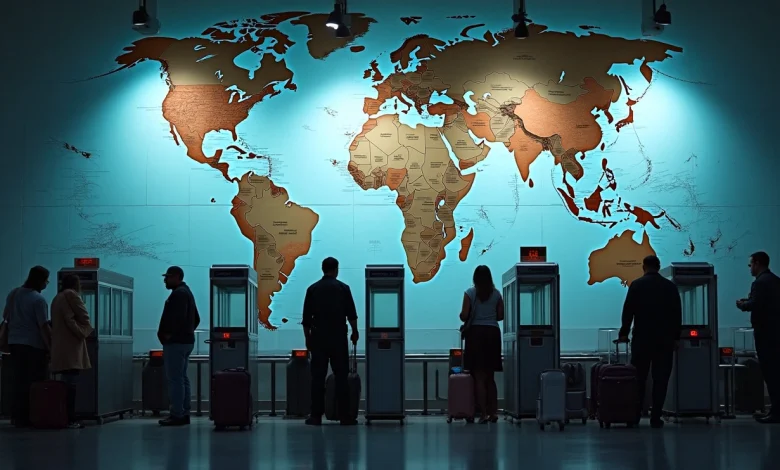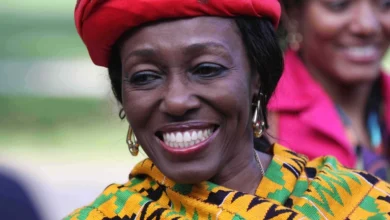
Leaked Memo Reveals Trump’s Massive New Travel Ban Plans
The Trump administration plans to add 36 more countries to its travel ban list. This major expansion would be one of the biggest changes to travel restrictions since 2017. Countries like Syria, Egypt, Nigeria, and Cambodia could face new limitations. These governments would get only 60 days to fix security issues or risk facing restrictions.
African nations make up most of the proposed list, with 25 out of 36 countries from the continent. The White House points to several problems that led to this decision. These include unreliable identity documents, security concerns with passports, and countries not accepting their deported citizens back. The new initiative builds on Trump’s broader immigration crackdown announced at the start of his second term. Right now, 12 countries face full restrictions, including Afghanistan, Myanmar, Chad, and Iran. Seven other nations already deal with partial limitations.
Trump administration weighs adding 36 countries to travel ban, memo says
Image Source: The Economic Times
The Washington Post and Reuters got hold of a classified State Department memo that shows plans to limit travel from 36 more countries. Secretary of State Marco Rubio signed a directive that gives these nations two months to meet specific U.S. security measures or face visa restrictions.
African nations make up most of the list, with 25 countries under review. The review also covers countries in the Caribbean, Central Asia, and Pacific Islands. Key countries on the list include:
- Major U.S. allies like Egypt, Ethiopia, and Nigeria
- Syria and Cambodia in Asia
- Caribbean nations such as Antigua and Barbuda and Saint Lucia
- Pacific Island nations including Tonga and Vanuatu
The complete list has Angola, Antigua and Barbuda, Benin, Bhutan, Burkina Faso, Cabo Verde, Cambodia, Cameroon, Côte D’Ivoire, Democratic Republic of Congo, Djibouti, Dominica, Ethiopia, Egypt, Gabon, The Gambia, Ghana, Kyrgyzstan, Liberia, Malawi, Mauritania, Niger, Nigeria, Saint Kitts and Nevis, Saint Lucia, Sao Tome and Principe, Senegal, South Sudan, Syria, Tanzania, Tonga, Tuvalu, Uganda, Vanuatu, Zambia, and Zimbabwe.
This expansion builds on the June 4 presidential proclamation that put full travel restrictions on 12 countries: Afghanistan, Myanmar, Chad, Republic of Congo, Equatorial Guinea, Eritrea, Haiti, Iran, Libya, Somalia, Sudan and Yemen. The proclamation also placed partial restrictions on travelers from Burundi, Cuba, Laos, Sierra Leone, Togo, Turkmenistan and Venezuela.
The memo highlights several concerns about these countries, especially with identity documentation and security. The problems include lack of “competent or cooperative central government authority” to create reliable identity documents, passport security issues, visa violations, and poor deportation cooperation. Some countries also raised flags because their citizenship-by-investment programs don’t require residency.
The affected nations must submit their compliance plans by Wednesday morning.
What benchmarks must countries meet to avoid restrictions?
Image Source: News Arena
Countries that might face travel restrictions need to act quick to meet strict U.S. security requirements. The State Department has set an urgent deadline that requires affected nations to submit their original action plans by 8 a.m. Wednesday. These countries have 60 days to fix all security issues or they might face travel restrictions.
The Trump administration has created several key measures countries must meet to stay off the expanded ban list. Countries need to know how to create reliable identity documents. The memo points out problems with nations that don’t have “a competent or cooperative central government authority” to issue secure identification. Countries must also fix any “questionable security” in their passport systems.
Visa overstay rates remain a substantial concern. Official data shows troubling numbers for several restricted countries:
- Chad: 49.54% overstay rate for business/tourist visas and 55.64% for student/exchange visas
- Eritrea: 20.09% overstay rate for business/tourist visas and 55.43% for student/exchange visas
- Haiti: 31.38% overstay rate for business/tourist visas
Countries must be willing to work with U.S. immigration enforcement. The directive expresses that some countries “were not cooperative in facilitating the removal of its nationals from the United States who were ordered to be removed”. This lack of cooperation makes it harder for the U.S. to manage immigration and public safety effectively.
There’s another reason why countries might face restrictions:
- Government corruption problems are systemic
- Citizenship-by-investment programs without residency requirements
- Nationals involved in terrorism, antisemitism, or anti-American activities
Countries can avoid sanctions if they accept deported third-country nationals or sign a “safe third country” agreement. The State Department makes it clear that restrictions will be “country-specific in order to encourage cooperation with the subject countries in recognition of each country’s unique circumstances”.
What are the broader implications of this travel ban expansion?
Image Source: Global News
The U.S. plan to add 36 more countries to its restricted list could trigger far-reaching effects beyond just immigration policy. This move has already created diplomatic tensions worldwide. The African Union voiced serious concerns about how this might damage their partnerships with the U.S. They urged American officials to have meaningful discussions with the affected countries. Chad took swift action by blocking all visas for U.S. citizens. Their President Mahamat Idriss Déby Itno stood firm, stating the country “has its dignity and pride”.
Businesses now face major challenges. They might not be able to hire or keep workers from these restricted countries. U.S. companies sending employees to these regions should expect delays and more paperwork. Travel managers must now review their plans carefully and look at assignments that involve people from these countries.
Several human rights groups have spoken against this proposal strongly. Amnesty International labeled it “discriminatory, racist, and downright cruel.” They believe it unfairly targets people based on “race, religion, or nationality” from “predominantly Black, Brown and Muslim-majority populations”. The Advocates for Human Rights called it “illegal, xenophobic, and harmful,” noting how it splits families and puts people at risk.
Many see clear signs of discrimination in this policy. Democratic lawmakers have pointed out that the list mostly targets countries in the Global South. They’re particularly concerned about how it “singles out African and Caribbean countries in a way that is deeply troubling”. Congresswoman Pramila Jayapal warned this move “will only further isolate us on the world stage”.
The security argument doesn’t hold up well under scrutiny. The Cato Institute’s research shows terrorist attacks by people from banned countries are very rare. Their data reveals “the annual chance of being murdered by a terrorist from one of the banned countries from 1975 to the end of 2024 was about 1 in 13.9 billion per year”.
This expanded ban would alter America’s immigration system drastically. Legal challenges seem likely, and global criticism of U.S. immigration policies under Trump’s leadership will probably increase.
This proposed travel ban expansion stands as one of the biggest changes to U.S. immigration policy in recent history. The Trump administration has given 36 nations, mostly African countries, a 60-day deadline. This move shows their tough position on border security and immigration control. Officials point to valid concerns about document reliability and deportation cooperation. All the same, critics see troubling patterns that seem to target Black, Brown, and Muslim-majority populations.
We already see diplomatic problems emerging. Chad’s quick retaliation shows the challenges ahead in foreign relations. On top of that, companies struggle as visa processes become harder to predict. Rights groups continue to ask questions about these broad restrictions’ legal and moral standing.
The administration’s security reasons don’t match up with statistics that show minimal terrorist threats from these banned countries. So this policy creates conflict between keeping the nation safe and America’s tradition of welcoming immigrants and refugees.
The future of these restrictions in court remains unclear. Whatever the final ruling, this expansion clearly delivers on Trump’s campaign promises for tighter immigration control. These sweeping changes will alter America’s relationships worldwide. They will impact economic ties and immigration patterns for years ahead.





